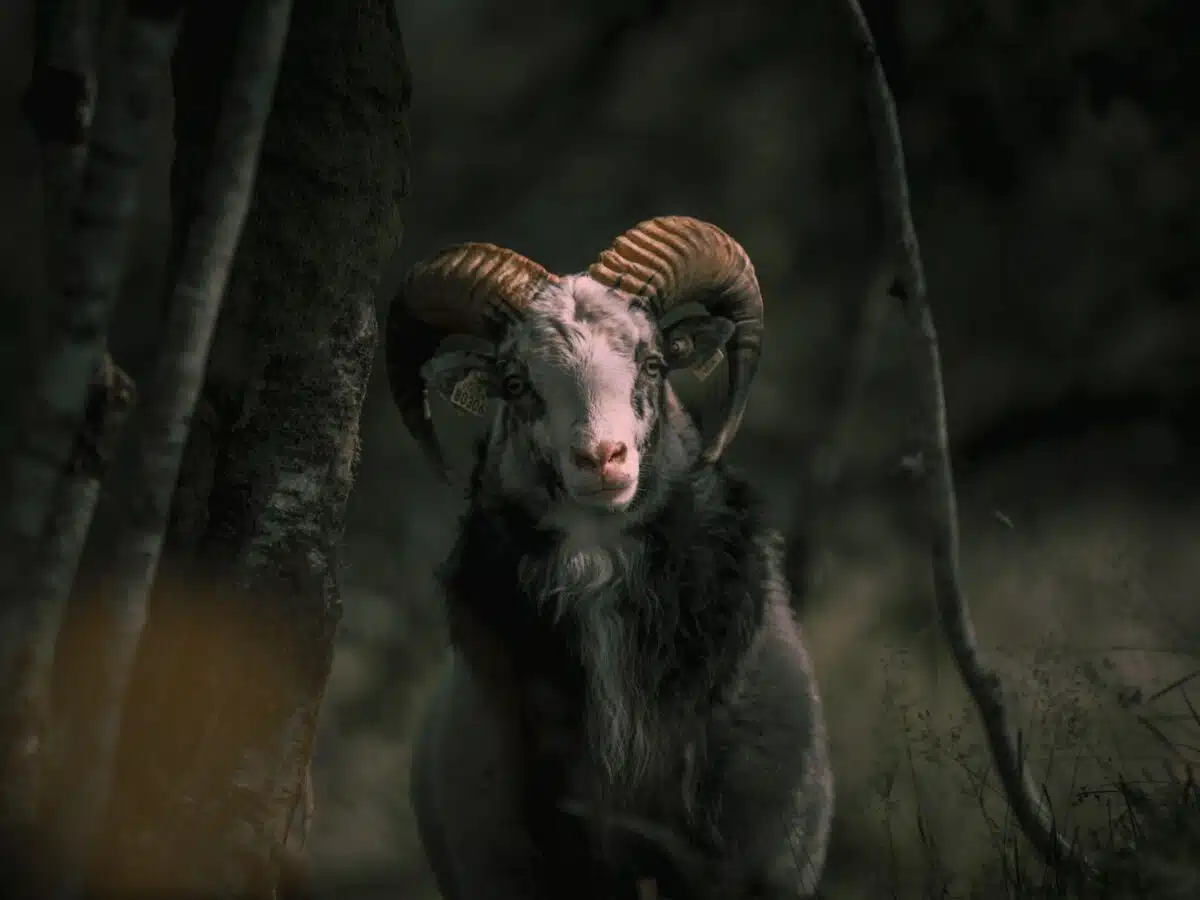Members of the animal kingdom have massive diversity and can be differentiated in a variety of ways. Some have horns, others have antlers, and some have none. Animals with horns are easy to distinguish from the rest of the animals.
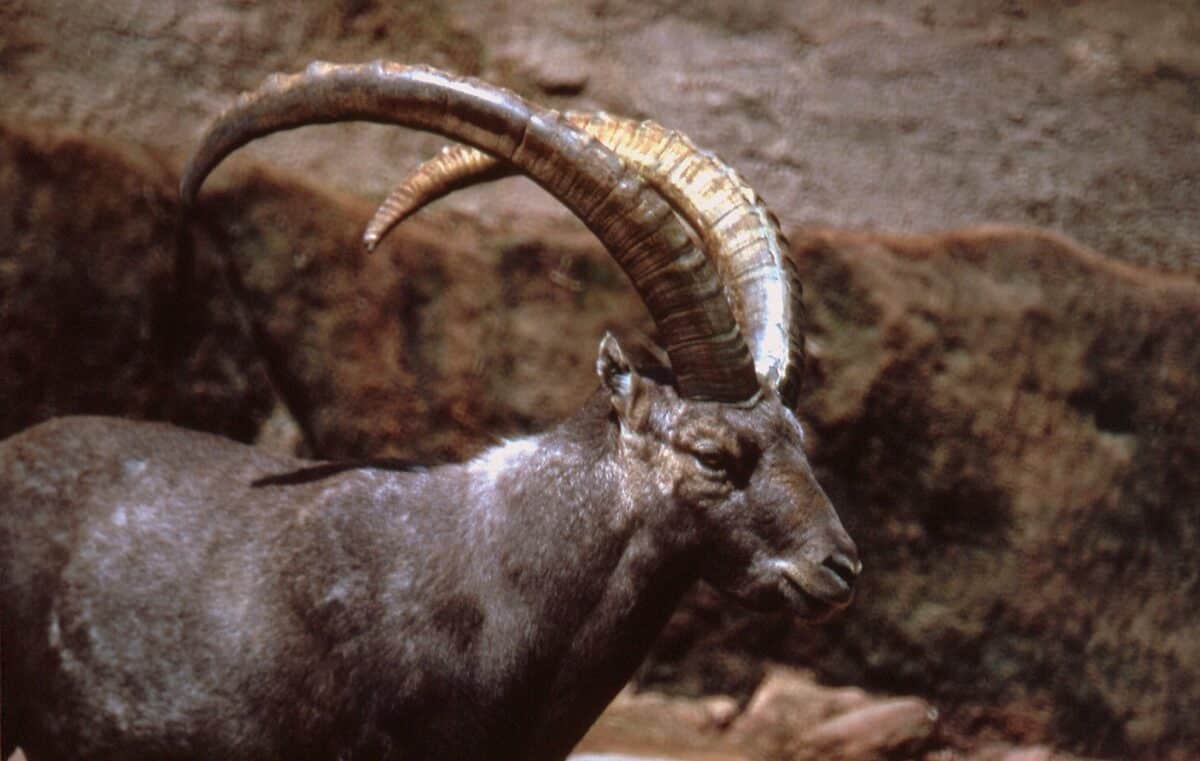
Did you know that Bovidae is a family in the animal kingdom whose members have horns?
There are animals with horns of different sizes and shapes. Although the list of animals with horns is long, this article will list the top 10 animals with horns and why they deserve a place on this top 10 list.
Brace yourselves for interesting facts on animals with horns! Let’s start!
Top 10 Animals With Horns
Below we will serve you a detailed discussion on the top 10 animals that have horns. Although you’re probably familiar with most of them, some facts will definitely take you by surprise!
#1 Domestic Goat
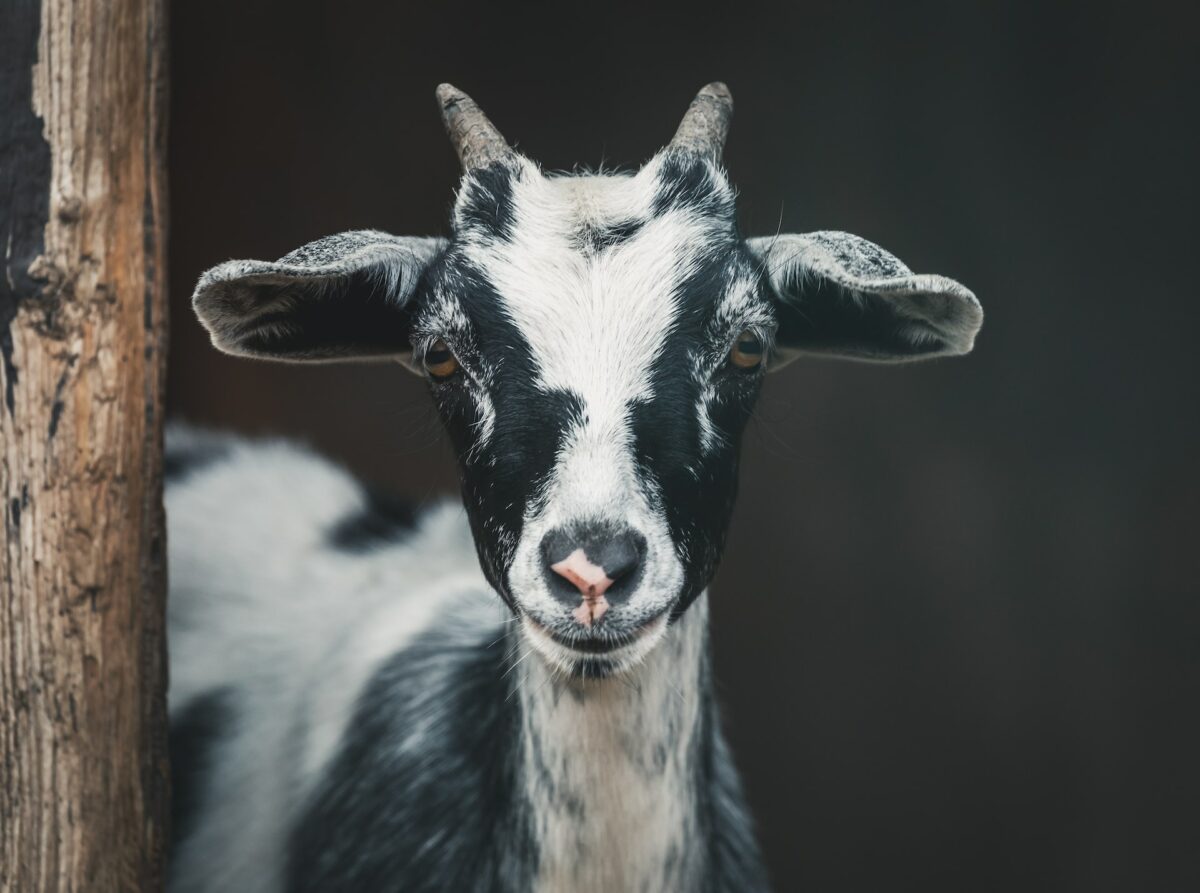
Scientific Name
Domesticated goats are scientifically known as Capra aegagrus hircus.
Commonly the male goats are called Billys and bucks, whereas the females are called nannies or doe.
Goat Horns
In the case of goats, it’s a common misconception that only males have horns, but this is wrong. The females and males both have horns, but the female horns are smaller in size than the male ones.
Goats use horns for the following purposes.
- Defense
- Communication
- Social domination
- Regulate body temperature
Habitat
Goats adopt a wide range of habitats. They live in mountain ranges, deserts, savannas, and scrubs. They are raised in various regions throughout the world. With proper care by humans, such as the provision of shelter and food availability, they can thrive in most climates and landscapes.
Food
They feed on bushes, shrubs, tree foliage, dried or fresh grass, and other plants.
Reproduction
The ideal season for goat breeding is from August to January. The female goat reaches puberty at five months of age, and from that time, the goat can start reproduction activities.
The reproduction of goats typically involves direct reproduction, but artificial insemination also occurs.
#2 Markhor
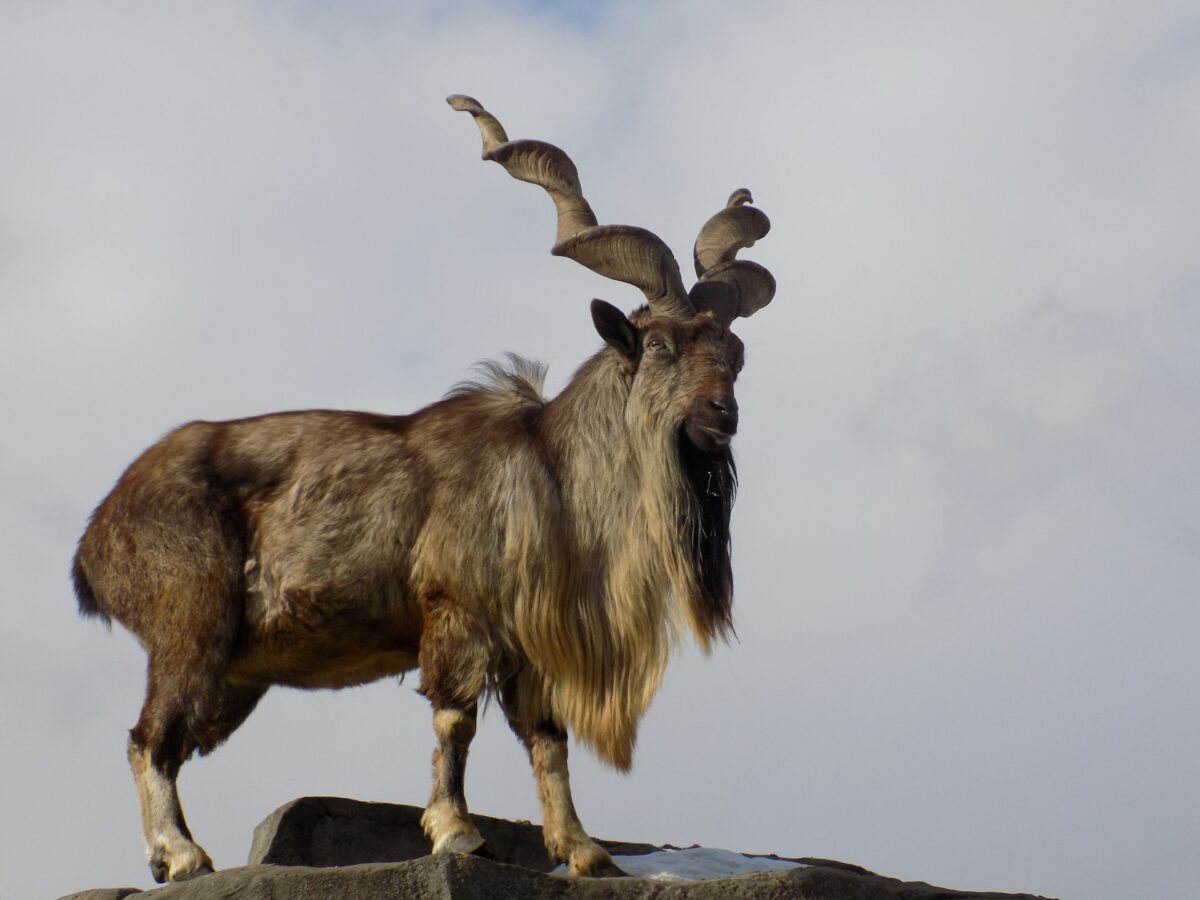
Scientific Name
Markhor is scientifically known as Capra falconeri, which means “big Himalayan goat with long spiral horns.”
Markhor Horns
The mature male markhor horns reach up to five feet long, whereas the female markhor horns grow about 2 feet long. The markhor is the national animal of Pakistan.
Markhor use horns for various purposes, such as:
- For uprooting soil
- For keeping their body temperature low by functioning as a built-in radiator
- Removing leaves from the trees
- Attracting opposite sex
- Fighting
Habitat
Markhors commonly live in the mountains of South and Central Asia, including Pakistan, Afghanistan, India, Uzbekistan, and Tajikistan.
Population
Unfortunately, this beautiful large spiral-horned animal has a steadily declining population. There are less than 10,000 markhors remaining; therefore, it is considered a near-threatened species.
The reason for this sad happening is the hunting of markhors for various reasons, including for horns.
Food
This screw-horned animal eats a variety of things, including snakes, tree matter, and grass. The markhor in Persian means “snake-killer” because of its appetite for snakes, and because they hunt and kill them so skilfully.
Reproduction
From April to June, the markhor breeds. Sexual maturity of a female markhor is achieved at the age of two. She gives birth after a gestation period of 155 days.
When there is no mating season, the female markhor lives with their young in herds, whereas the males stay alone.
#3 Saiga
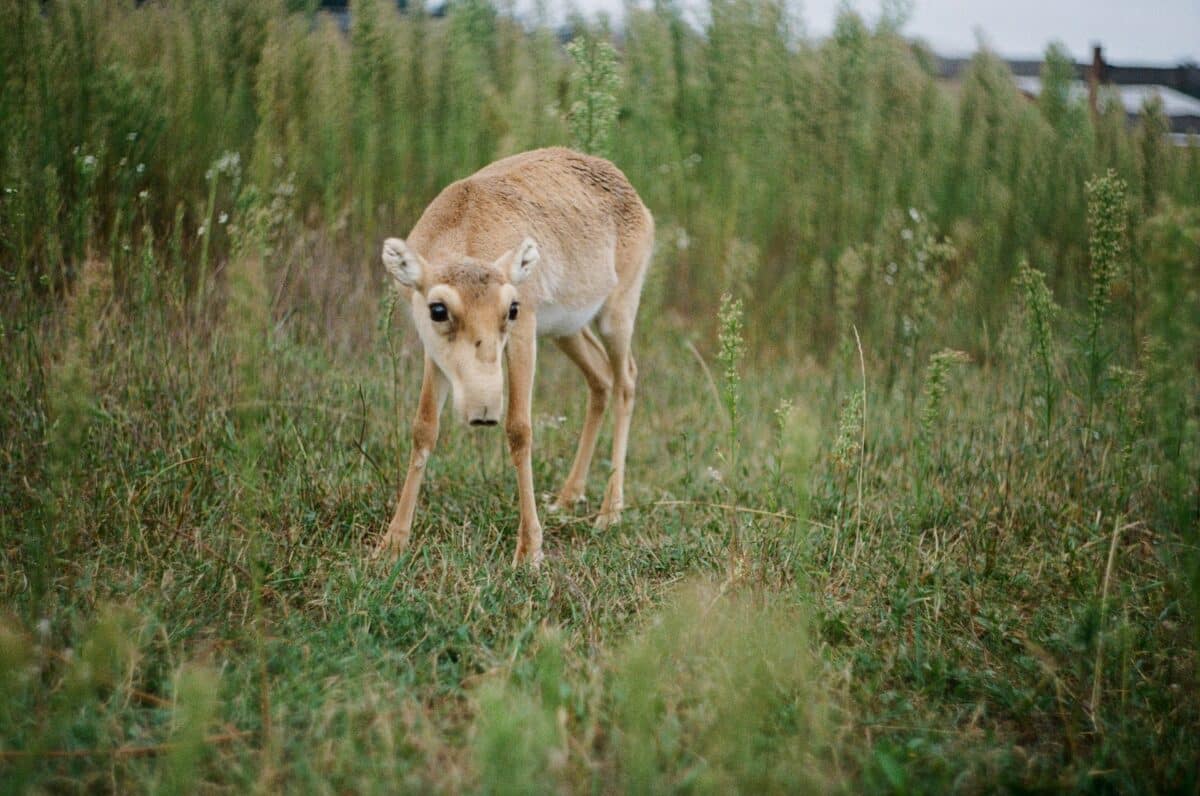
Scientific Name
Scientifically, saiga is known as Saiga tatarica.
Saiga Horns
Only the male saiga have 8 – 15 inches (20-40cm) long horns, whereas their female counterparts do not. Mostly their horns have no curves. Instead, they are straight and appear carrot-shaped.
Population
Only 50,000 saigas remain in the world; therefore, they are included in the list of critically endangered animals by the IUCN.
Habitat
They commonly reside in some regions of Kazakhstan, Kalmykia, and two areas of Mongolia.
The saiga likes to live in semi-desert grasslands, open and dry steppes, and open regions with no dense vegetation.
Food
The saiga feeds on grasses, lichens, herbs, and low-growing shrubs. They eat in the evening and morning. At midday, they indulge in a long nap.
Reproduction
In the female saigas harem, the male saigas will battle, and only the conquering one reproduces with females. Their females have a gestation period of 139 to 152 days. Most commonly, twins are born.
#4 Asian Water Buffalo
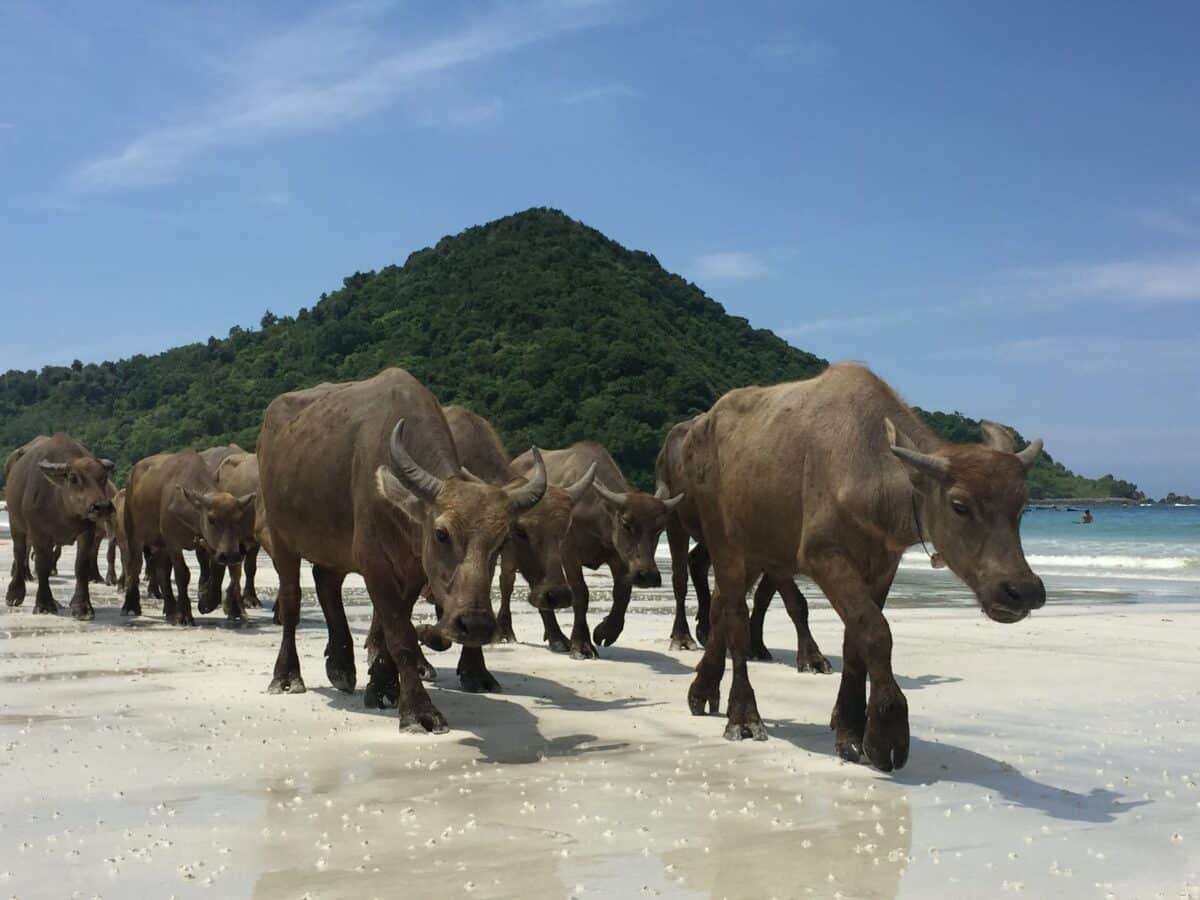
Scientific Name
Bubalus bubalis is the scientific name of the Asian water buffalo.
Asian Water Buffalo Horns
Asian water buffalo have horns that are curved backward. Their horns are not straight; instead, they extend sideways. Sometimes the horns of these buffalo curve in semicircle form as well.
In the case of buffalo, the females have long horns compared to the males. But the male horns are comparatively thicker.
The buffalo takes advantage of their horns in a number of ways and use their horns for:
- Hustling space within a herd
- Protection from predators
- In fights to prove dominance during fights
Habitat
The Asia buffalo predominantly occur in tropical forests, marshes, grasslands, subtropical forests, and alluvial plains.
They prefer woodlands to get maximum shelter. Likewise, they enjoy wallowing in mud holes or rivers.
Population
Asian water buffalo occur on five continents, and their estimated population is 202 million. Their population is so huge because many people’s livelihood depends upon these buffaloes; therefore, they are protected and cared for by many.
Food
Water buffalos are herbivores (graminivores, folivorous). They prefer to eat tree bark, crops, aquatic plants, grass, leaves, and herbs. Their diet also includes stems, microalgae, and aquatic vegetation that usually grow near water bodies and marshy lands.
Reproduction
Female water buffalo have the most prolonged gestation period. It lasts 9 to 11 months (300 to 340 days); thus, they only give birth to calves every alternating year.
#5 Mouflon
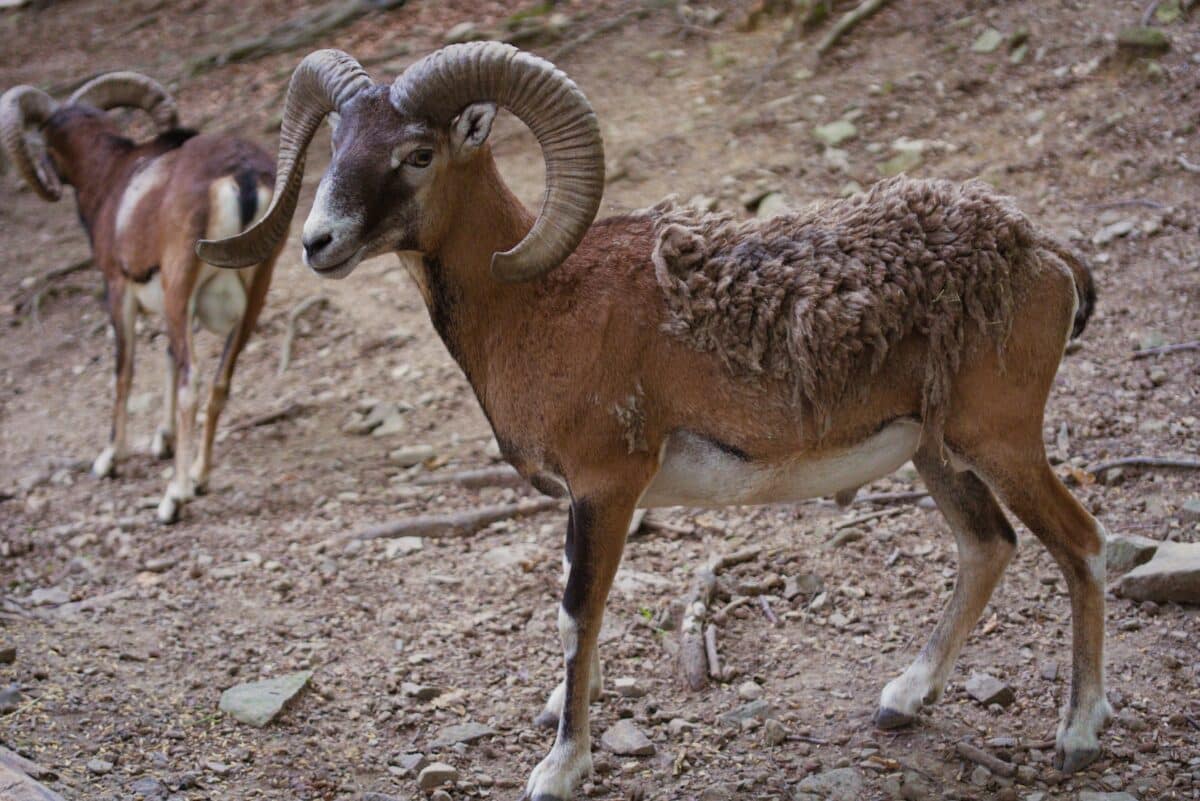
Scientific Name
Scientifically, mouflon is called Ovis aries musimon.
Mouflon Horns
The fascinating thing about the mouflon horns is that they keep growing continuously throughout their life. Its social status in a group depends on the size of its horns. A mouflon with long horns gets the top position in the group compared to others and thus dominates other mouflons.
Both males and females have horns but are still distinguishable as the males have more giant horns than the females. Their horns don’t expand at the end. Typically their horns are 20 to 29 inches long, but not all mouflons reach this size.
Habitat
You can find mouflons in western, south, and central Asian countries like Turkey, Pakistan, Oman, India, and the Mediterranean islands.
The mouflon prefers to live in mountainous areas that have grasslands and deserts. They migrate to lower altitudes during cold temperatures.
Population
This animal with horns is also included in the IUCN (International Union for Conservation of Nature) red list. They are deemed near threatened animals, which means their population is reducing significantly. There are only 26,500 mouflons left in the world. Among these 26,500 mouflons, only 16,000 are sexually mature.
Food
Mouflon falls into the category of herbivores (graminivores) and mainly feeds on grasses. Sometimes they also eat from trees and shrubs, known as browsing.
Reproduction
Autumn to early winter is considered the mating period of mouflons. Their females have a 210 days gestation period, and thus in April, one, two, or sometimes three lambs are born.
#6 Ibex
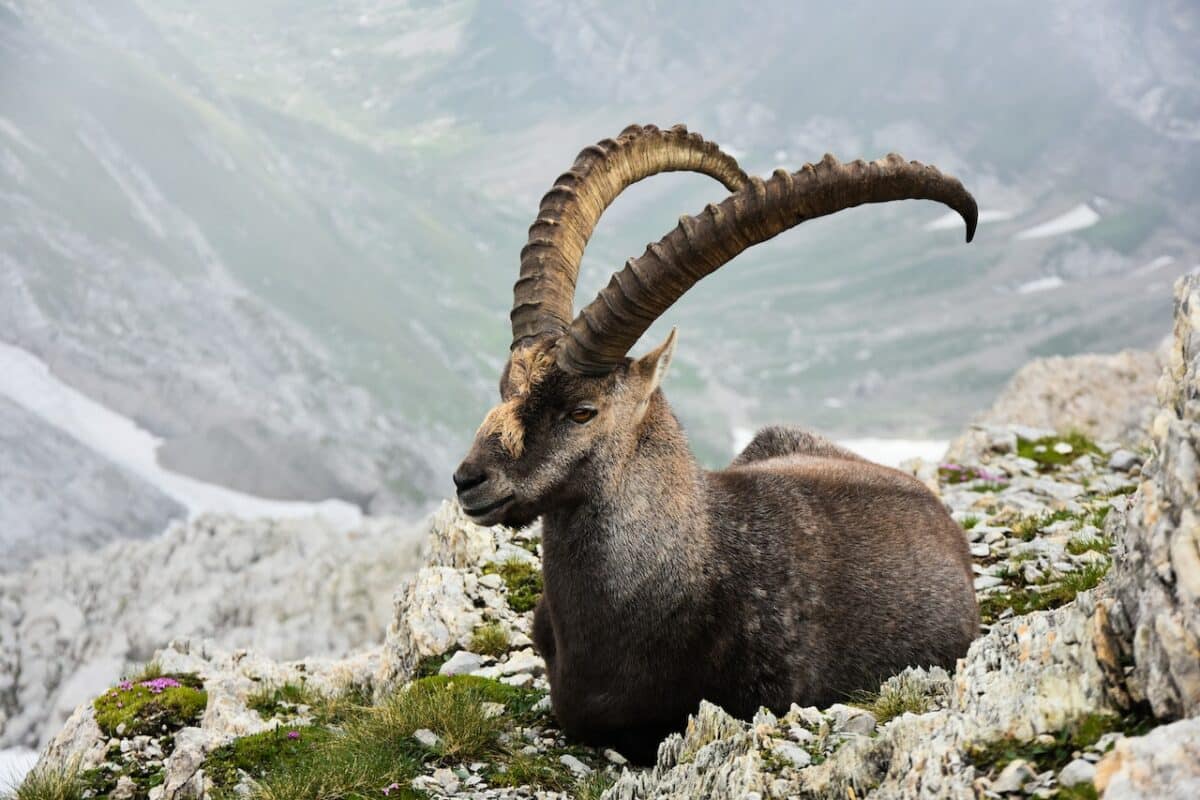
Scientific Name
In scientific language the Ibex is called Capra ibex.
Ibex Horns
The ibex use their horns for a number of purposes, including:
- Sexual selection
- Territorial defense
Both male and female ibex have long horns with knobby rings on the outer twist, while the horns form a semicircle by growing backward. Usually, the male ibex have up to 4 feet long horns, which may be harmful to other organisms living in the same region.
Habitat
Usually, ibex resides in the mountains of east Africa, Europe, Asia, and North Africa. This sure-footed goat dwells in the mountains to get maximum protection from predators.
Population
Ibex have various species, which are all distributed throughout the world. Some of them are endangered, while others are found in abundance.
- Alpine ibex has a population of 30,000
- The Iberian ibex have 9,000 individuals remaining
- Walia has 500 species (i.e. a critically endangered species)
- Nubian ibex have less than 5,000 individuals left
Food
Ibex feed mainly on springs, grasses, flowers, and other plants of the area.
These sure-footed goats are herbivores (folivores, graminivores); therefore, they depend on plants.
Reproduction
Ibex has a fascinating reproduction method. In the rut, which is the ibex breeding season, the males fight with each other by pushing their heads against each other. Those that win get the right to mate with the females.
The winner ibex will court the female ibex in a process that takes about 30 minutes. Females have a gestation duration of 147 to 180 days once pregnant.
#7 Bharal
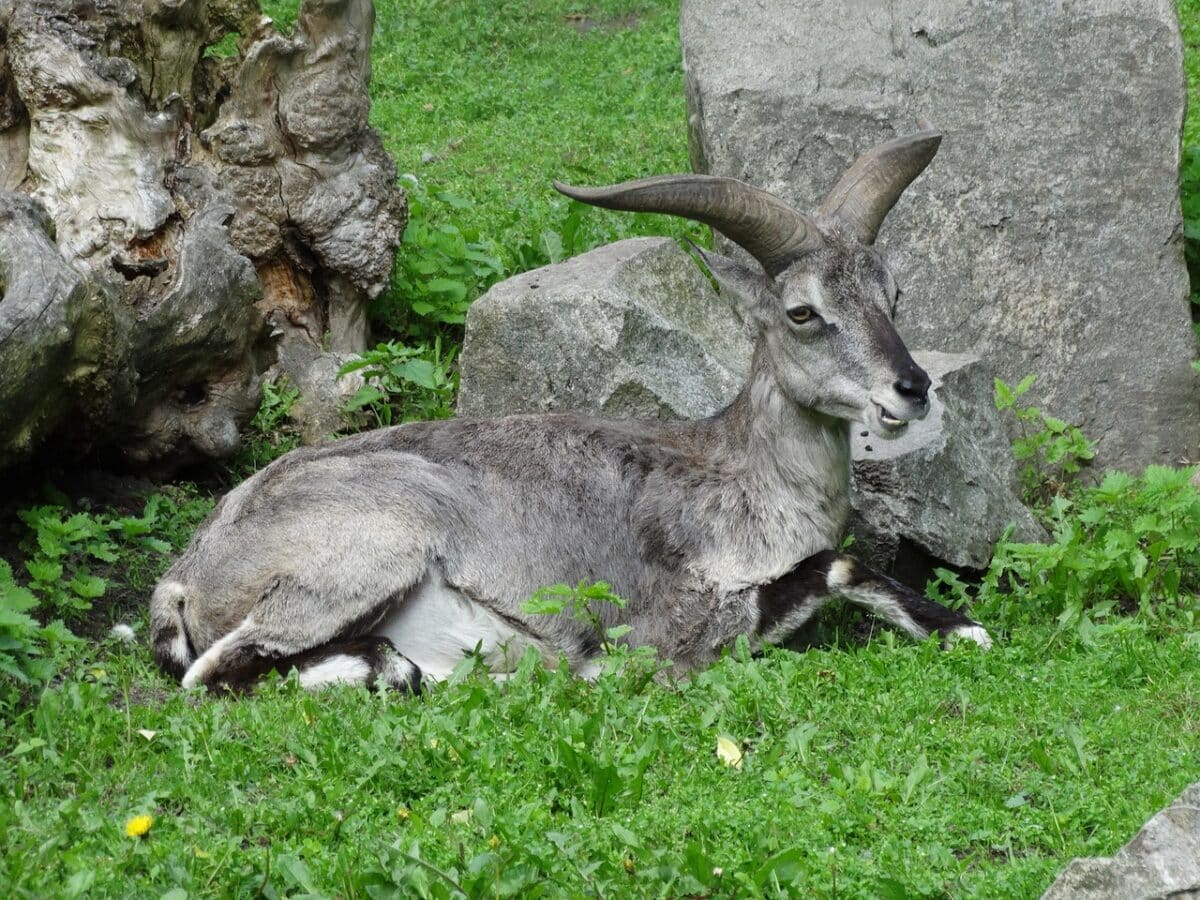
Scientific Name
Pseudois nayaur is the bharal scientific name. The bharal is also known by the name of “Blue sheep.”
Bharal Horns
Blue sheep horns are found in males and females, which are carinated on the upper surface. In females, the horns are present but much smaller and straight as compared to males. Typically a female’s horns will measure up to 7.9 inches (20 cm), whereas male blue sheep have 31 inches (80 cm) long horns. These grow upward, then curve sideways and turn backward, resembling an upside-down mustache.
Habitat
High Himalayas in Pakistan, Myanmar, Tibet, Bhutan, India, and Nepal is the home of the bharal. On high mountains, where there are open grassy slopes and near cliffs, these blue sheep like to live. Forested regions are avoided by the bharals.
Population
Bharal is on the least concerned list of IUCN because its population is about 47,000-414,000 individuals. They are far from endangered, but it is vital to protect them in various ways from becoming endangered.
Food
The blue sheep diet consists of shrubs, herbs, grasses, mosses, and lichens. Therefore they are herbivores (folivores, graminivores).
Reproduction
Blue sheep mating season is between October and January; their babies are born from May to July. Male bharals show less attention to females until females reach estrus.
#8 Addax
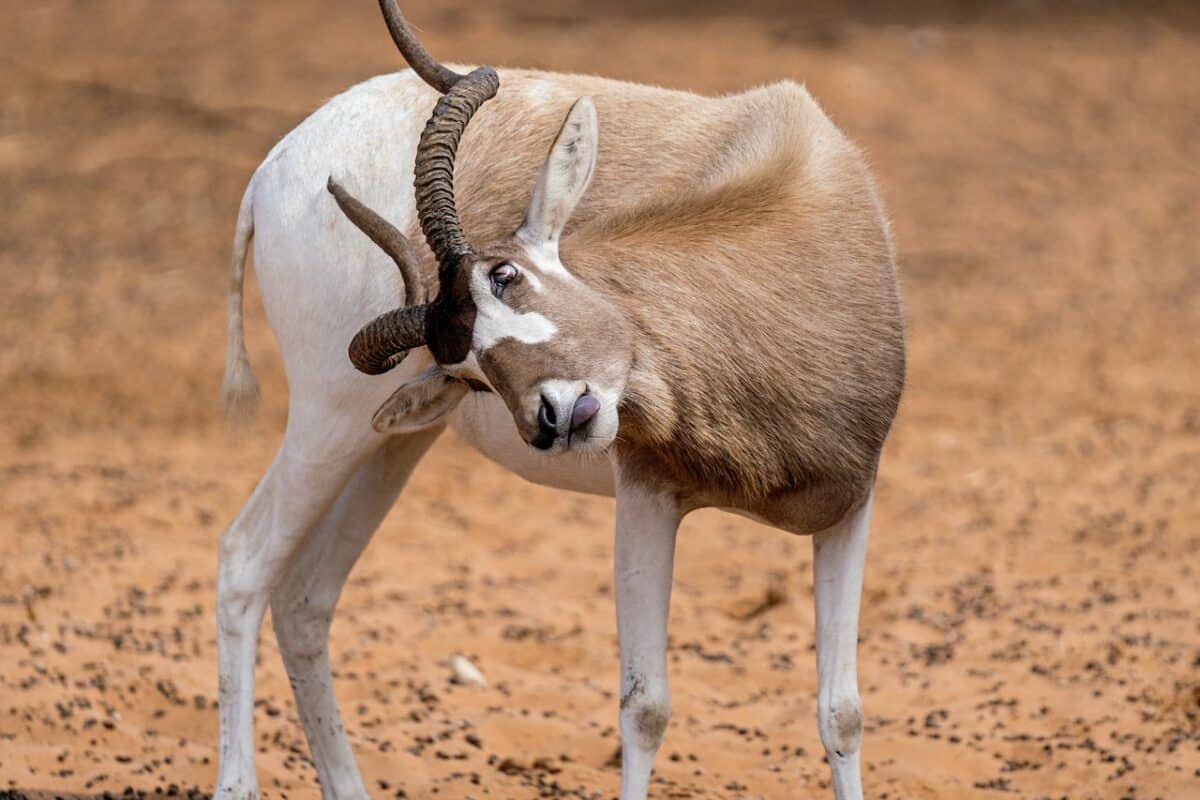
Scientific Name
The scientific name of addax is Addax nasomaculatus.
Addax is also known by other common names, including pale antelope, white antelope, and screw horn antelope.
Addax Horns
Like many other animals, the addax also possesses horns. Their horns are twisted and long in size. Typically the length of the male addax horn is 28 to 33 inches (70 to 85 cm) and usually 22 to 31 inches ( 55 to 80 cm) in females.
Habitat
The natural habitat of the addax includes semi-deserts, arid areas, stony deserts, and sandy deserts. They live in deserts because they can survive without water for a long time.
Usually, they reside in the regions of Niger, Chad, the western Sahara, Algeria, Sudan, Libya, Tunisia, and Morocco.
Population
Unfortunately, the addax is a critically endangered species on the IUCN list because only 30-90 mature addax are left in the world.
Food
Addax likes to eat scrub and desert grasses. To get the sparse vegetation, this animal covers a long distance in the desert. As the addax gets enough moisture from the foliage it feeds on, it doesn’t need to drink water very frequently.
Reproduction
In early spring and winter, their breeding season is at its peak. The gestation of addax females occurs for 257 to 264 days, and only one young is born each time.
Males mature at two years, whereas females mature during the second or third summer.
#9 Greater Kudu
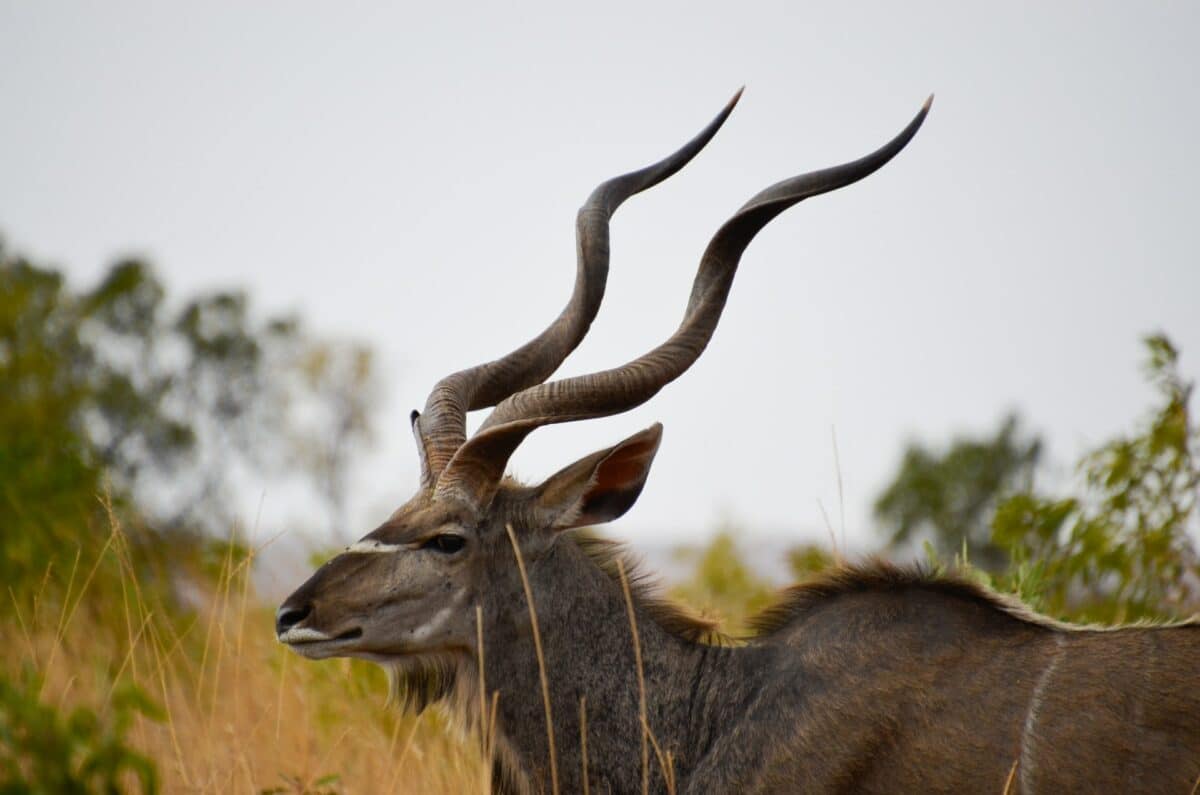
Scientific Name
Tragelaphus strepsiceros is the scientific name of the greater kudu.
Greater Kudu Horns
The horns of greater kudu grow as long as 6 feet (1.8 meters), while making beautiful two and a half graceful twists. They use their horns to protect themselves from predators.
Habitat
Forest, scrub woodland acacia, hills, mopane bush on lowlands, mountains, and dense brush regions are the preferred natural territory of the greater kudu.
Population
Currently, the greater kudu has 482,000 individuals throughout the world. Due to their stable population, they are included in the least concerned red list of IUCN.
Food
The greater kudu is a herbivore (folivore, graminivore); they eat grasses, leaves, and shoots. Sometimes they also eat fruits, roots, and tubers.
Reproduction
The males mature sexually at 21 to 24 months, and the females attain sexual maturity at 15 to 21 months. Females have a gestation period of up to nine months.
#10 Scimitar-Horned Oryx
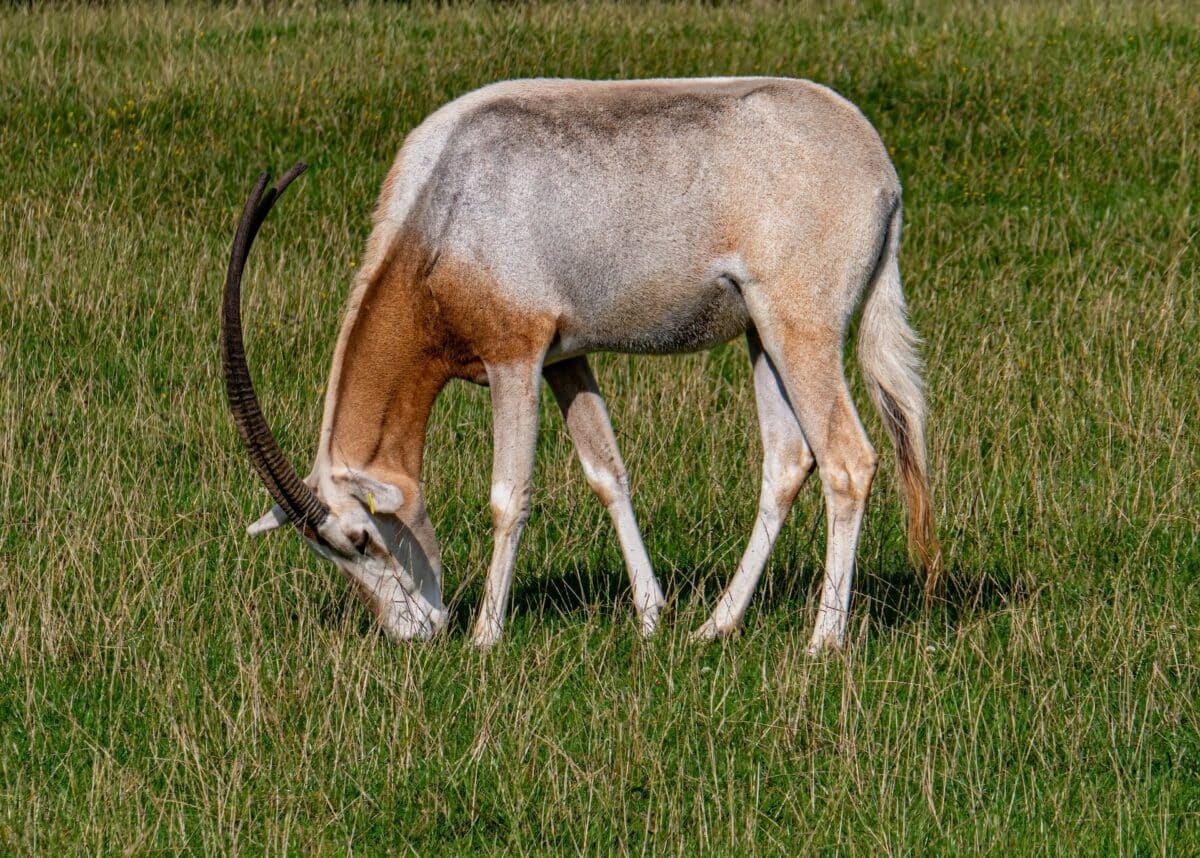
Scientific Name
Scientifically scimitar-horned oryx is called Oryx dammah.
Commonly the scimitar-horned oryx is known as the Sahara oryx or scimitar-horned oryx.
Scimitar-Horned Oryx Horns
The male and female scimitar-horned oryx have thin and long horns that slightly curve backward. Of all the oryx species, only this one has horns that are curved.
Their horns are sharply pointed and rigid, made up of hollow and harsh bones. The horns of this animal attain a length of around 4 feet (1.2 meters).
Habitat
These scimitar-horned oryx naturally occur in the semi-desert and desert region of Africa, famous as the Great steppe. This area partitions the Sahara desert’s southern edge by extending from Senegal to Sudan.
Population
Although various breeding programs and global conservation efforts are made, still the scimitar-horned oryx is included on the near-extinction list because only 1800 individuals of this animal with horns are left in the world.
Food
The scimitar-horned oryx diet consists of buds, juicy roots, herbs, and grasses. The mother with young calves also eats acacia seed pods, which provide many nutrients. They are therefore listed in the herbivores category.
Reproduction
March to October is deemed their breeding season. After a gestation period of eight months, the female scimitar-horned oryx gives birth to one calf.
In modern times the assisted reproduction process is used to increase the population of critically endangered species like that of the scimitar-horned oryx.
The Bottom Line
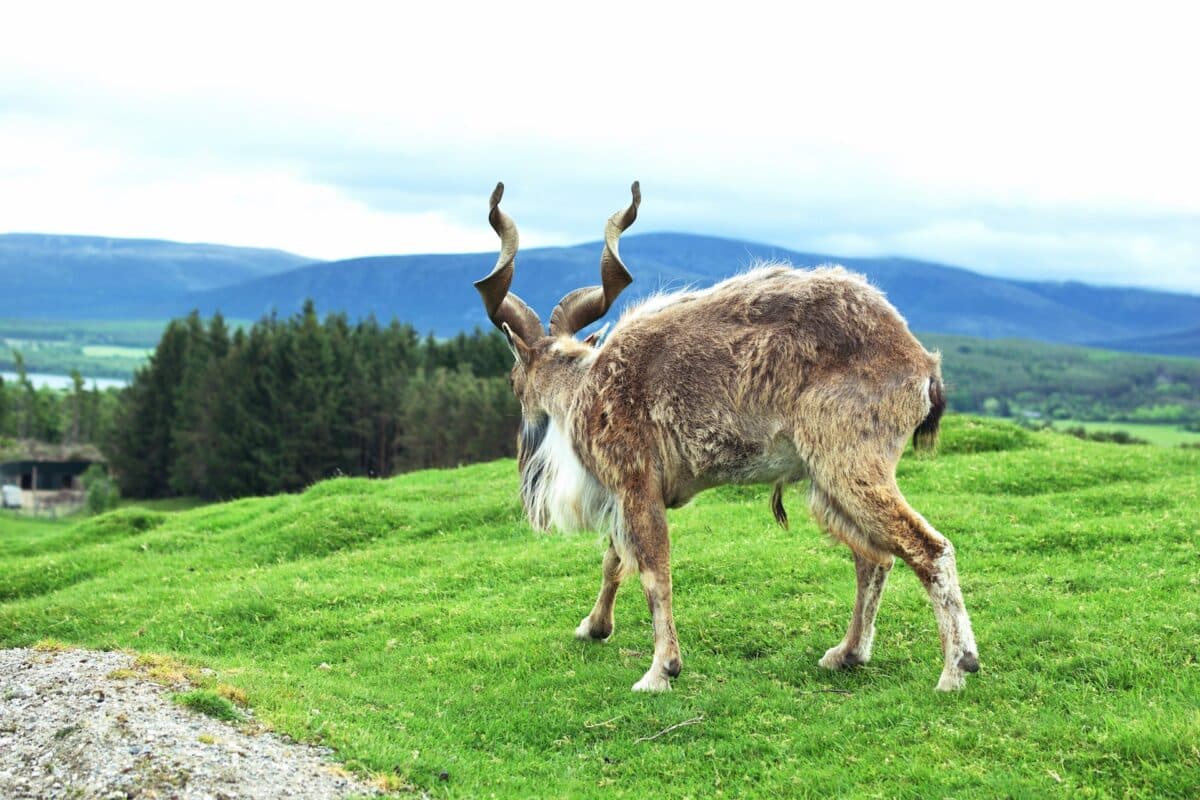
| Top 10 Animals With Horns |
| Animals with horns belong to the bovidae family. |
| Male saiga have 20 to 40-cm long horns, and the females lack horns. |
| Of all the oryx species, only the scimitar horned oryx has horns that are curved. |
| Animals mainly use horns for protection from predators and attracting the opposite sex. |
| Bharal is famous for the name “Blue sheep.” |
| The fascinating thing about the mouflon horns is that they keep growing continuously throughout their life. |
| The female buffalo have long horns compared to the males. |
This article explains the top 10 animals with horns in detail. Every animal we described here have horns in different sizes and shapes. Their horns help them in various ways, such as attracting the opposite sex, protection from predators, and dominance.
Some of these animals that possess horns are near extinct or endangered; therefore, proper breeding programs and global efforts for conservation are required to protect them from extinction.
Their diets are rather similar, whereas the habitat differs somewhat. The reproduction method also varies from animal to animal.
Which animal with horns is your favorite? Do you perhaps keep any animals with horns as pets?
Thank you for reading this article! Another horned animal not included in this list is the striking Alpine Goat. Head over here for a full fact file on this member of the bovidae family.
Join our Forum for free today!


